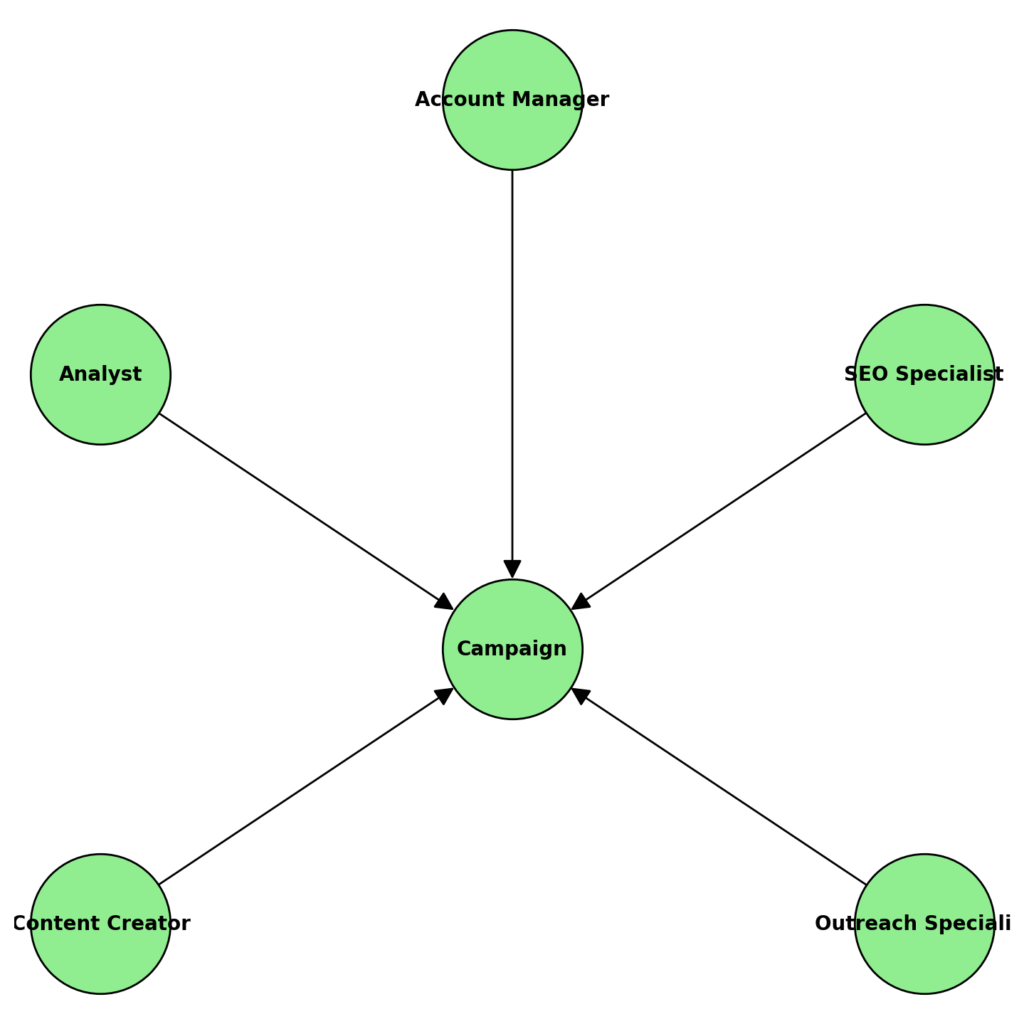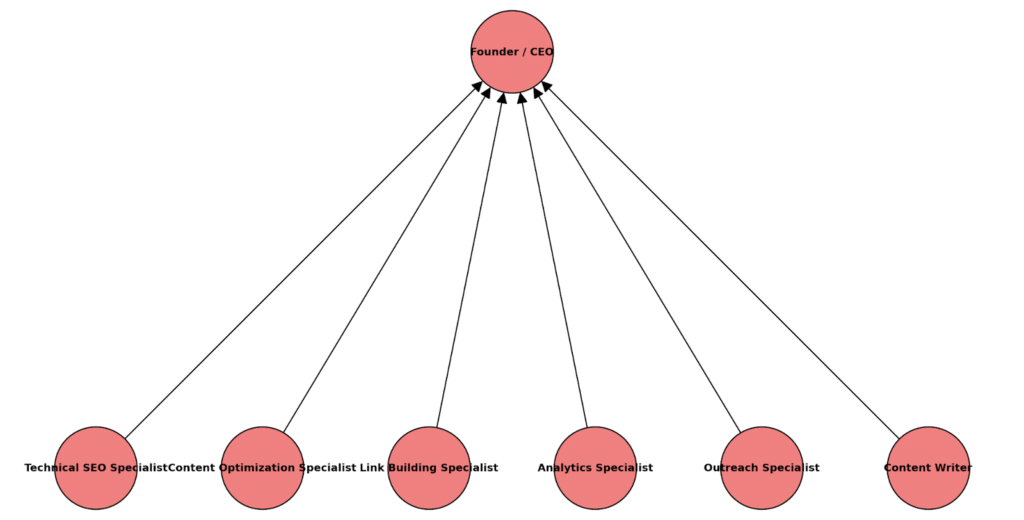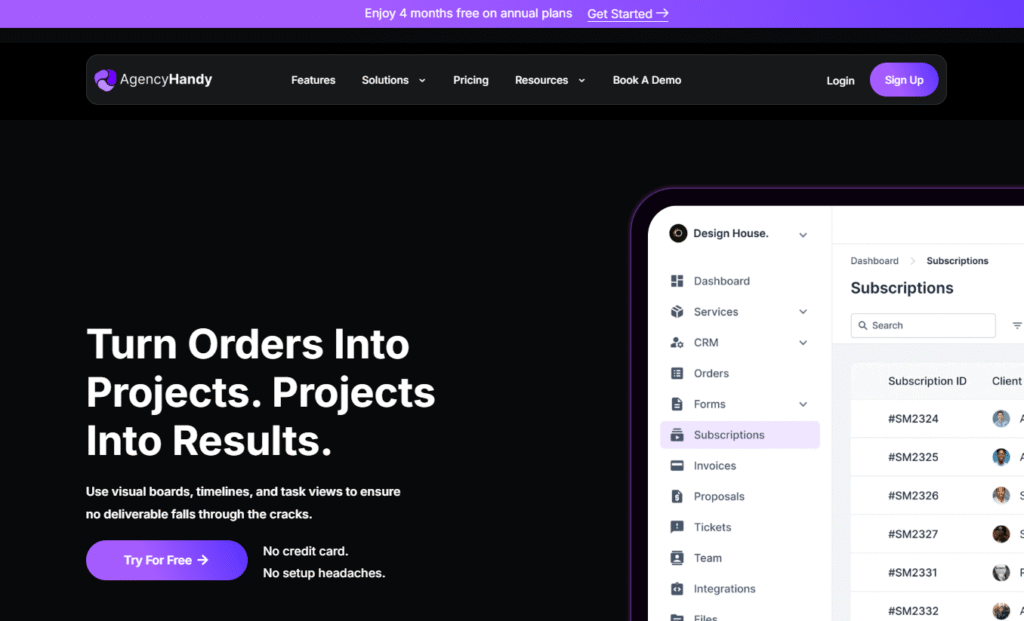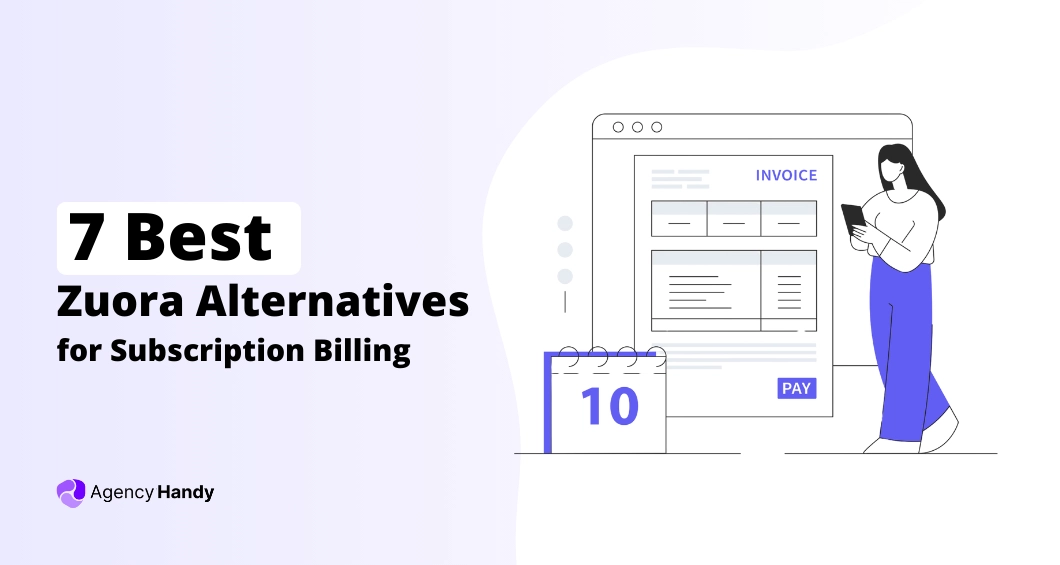Most SEO agencies don’t fail because of poor strategy. They fail because of poor structure.
Take that your team may be talented, your clients may be eager, and your services may be in demand. However, without a clear system, projects accumulate, deadlines slip, and clients quietly walk away.
It’s alarming. Agencies that ignore structure eventually burn out or plateau.
But you can avoid this with the right SEO agency structure; you’ll know exactly how leadership, client services, delivery teams, and support functions work together.
This guide outlines the models, processes, and a practical example you can follow to build an agency that scales smoothly.
Key Takeaways
- A strong SEO agency structure is the foundation of growth. It helps teams stay organized, projects move more efficiently, and clients remain satisfied.
- Agencies can choose from 4 main models: Hierarchical, Pod/Squad, Flat, and Freelance/Decentralized, each of which fits different stages of growth.
- To structure your work effectively, define your goals, hire strategically, create a clear SEO strategy, and utilize the right project management tool.
- Agency Handy brings it all together, helping you manage clients, projects, and teams in one place, so your agency can scale without chaos.
Top 4 SEO Agency Structure Models
SEO agency structure model is the way an agency organizes its leadership, client services, delivery teams, and support functions into a system that works together.
It improves efficiency, avoids confusion, and helps the agency scale without losing clients or burning out the team.
1. Traditional Hierarchical Structure

The traditional hierarchical structure is one of the oldest ways agencies organize themselves. It works like a clear chain of command, starting from leadership at the top and flowing down through managers to specialists.
In this model, a founder or CEO typically sets the direction, supported by an SEO director or manager who oversees the day-to-day strategy.
Under them, you’ll find specialists who handle core areas, like technical SEO, content optimization, link building, and analytics.
Each person has a defined scope, ensuring there’s no overlap or confusion about who is responsible for what.
The biggest advantage here is clarity.
Clients know who their main contact is, and team members know exactly where to report. It also allows individuals to become true experts in their niche.
Research highlights that hierarchical organizations tend to be highly efficient and disciplined, though less flexible and less innovative (EBSCO). That trade-off makes communication between departments essential to avoid silos.
When to try it: This model is best suited for small to mid-sized agencies that want specialization as they grow, while keeping reporting lines simple and easy to manage.
2. Pod/Squads Structure

A pod structure is a way of organizing an SEO agency into small, cross-functional groups. Each pod works like a mini-agency, handling strategy, execution, and reporting for a single client or project.
This model is popular because it gives clients a dedicated team and ensures accountability. Instead of work being spread thinly across departments, one pod owns the entire workflow.
That means faster decisions, better communication, and stronger client relationships.
When to try it: Growing SEO agencies that take on multiple clients or large projects benefit most. If you’re scaling quickly, pods make it easy to add capacity and create a new team when a new client comes on board.
3. Flat Structure

A flat structure is the simplest way to organize an SEO agency. It eliminates most layers of management, allowing specialists to work closely with leadership.
Everyone is focused on shared goals, rather than waiting for approval from multiple managers.
This setup matters because it gives agencies speed. Decisions move faster, and teams can respond quickly to client needs. It also makes employees feel more involved, since they have a direct say in delivery and results.
According to a Gallup study, businesses that empower employees experience 21% higher profitability, as engagement leads to better outcomes.
Agencies use this model when they want agility and close collaboration. A small team working on a handful of clients benefits most.
However, as the agency grows, it can become increasingly challenging to manage reporting and responsibilities without introducing some structure.
When to try it: Early-stage or boutique SEO agencies that value creativity and quick action over strict hierarchies. It’s a great choice if your team is small, motivated, and comfortable wearing multiple hats.
4. Freelance/Decentralized Structure
A freelance or decentralized structure uses external specialists instead of (or in addition to) a full in-house team. The core team manages clients and orchestration, while freelancers deliver key tasks.
This model is vital for agencies with tight budgets or fluctuating workloads. You only pay when you need a skill. You also tap into a global talent pool without long-term commitment.
BrightLocal notes that freelance models allow agencies to “release financial obligations associated with a full-time team” yet still deliver for clients.
In practice, a strategist handles the roadmap and the client relationship. Freelancers may take on tasks such as content creation, technical fixes, link building, or analytics.
When to try it: Small agencies, local SEO shops, or those testing new service lines without hiring staff.
How to Structure an SEO Agency
Even if you are settled with an SEO agency structured model, you still need to know the SEO agency process to build your own. Here you go…
1. Define Your Goal
Before structuring your SEO agency, determine what you want it to achieve.
Ask: What services do we want to lead with? Content? Links? Technical SEO? What revenue or growth target must we achieve within the next 12 months?
Then look at the competition. Use tools to see how many backlinks top pages have. If rivals have thousands of links, you’ll need to hire for link building.
Similarly, audit your site.
Your structure, roles, and processes should follow your goal, not the other way around.
2. Hire the Right Talent
Once you know your goals, hire people who fill those gaps.
Utilize job boards for general job openings and the marketplace, or dig into your network when you need freelancers.
A strong job listing matters. It attracts better candidates. Poor descriptions lead to weak applicants.
Start with a core SEO leader who can grow your team. Then bring in content creators and technical support. Later, add link builders or analysts as your team scales.
According to Forbes, top performers can deliver up to 400% more output than average hires. That’s why taking time to find the right people isn’t optional, but it’s your biggest growth advantage.
3. Develop a Clear Strategy
Execute by bringing in an SEO strategist or auditor to find gaps and opportunities. They’ll run a site audit, define goals, and map out a clear plan for what comes next.
This plan is your guide. It tells you which roles to hire, which campaigns to prioritize, and how to measure success. Without it, you risk doing busy work that doesn’t move the needle.
A solid strategy keeps every team member focused on achieving results, not just completing tasks at random.
Apparently, businesses with a documented marketing plan are 331% more likely to report success than those without one.
Once your strategy is defined, you can align every decision from hiring and workflows to reporting around clear, measurable outcomes.
4. Set Up Projects and Tasks
Once your team is ready, you need one place to manage every project, client, and task. And the right project management software can help you out.

You can create projects, assign tasks, track deadlines, and communicate with your team and clients, all in real time—no more jumping between 5 different tools to stay organized.
The future of project management is becoming smarter. A recent PMI report found that 82% of senior leaders plan to use AI in project management within the next 5 years.
Agency Handy is already built with that future in mind, combining automation and simplicity to keep your agency running smoothly.
With Agency Handy, each client order is converted into a project. Every deliverable is tracked, every update is visible, and nothing slips through the cracks.
It’s the simplest way to manage your agency operations, scale your team, and keep clients happy, all in one place.
Want to learn more about Agency Handy? Check out this complete walkthrough of Agency Handy in just a few minutes:
Next Steps
Building the right SEO agency structure takes planning, consistency, and the right tools. Start small, focus on clarity, and scale with a system that supports your goals.
With Agency Handy, you can manage projects, clients, and your team from one place. It’s built to help agencies stay organized and grow with confidence.Ready to structure your agency smarter? Explore how Agency Handy can help you scale from setup to delivery.








